#MESPILUS AMELANCHIER
Video
n462_w1150 by Biodiversity Heritage Library
Via Flickr:
Florae Austriacae, sive, Plantarum selectarum in Austriae archiducatu. Viennæ Austriæ :Leopoldi Joannis Kaliwoda,1773-78.. biodiversitylibrary.org/page/278134
#1773#Austria#Botany#Copper engraving#Graphic media :#Hand colored#Missouri Botanical Garden#Peter H. Raven Library#bhl:page=278134#dc:identifier=http://biodiversitylibrary.org/page/278134#flickr#botanical illustration#scientific illustration#MESPILUS AMELANCHIER#Amelanchier canadensis#bilberry#canadian serviceberry#chuckle-berry#currant-tree#juneberry#thicket serviceberry#shadbush serviceberry#shadbush#shad-blow#shad-blow serviceberry
3 notes
·
View notes
Text

1 note
·
View note
Text
this year i hope i can get seeds from amelanchier, fragula, malus sylvestris, mespilus germanica, pyrus communis L., rubus idaeus, sorbus aria, sorbus domestica, sorbus torminalis, rubia, celtis australis, smilax aspera, pistacia lentiscus...
4 notes
·
View notes
Text
Liste d'arbres nourricier pour l'homme, de climat tempéré
Châtaigner Castanea sativa
Mûrier blanc Morus alba
Mûrier noir Morus nigra
Figuier Ficus carica
Noisetier (Coudrier) Corylus avellana (5-7m)
Noisetier de Byzance Corylus colurna (25m)
Noyer commun Juglans regia
Tilleul à petites feuilles Tilia cordata
Pin pignon Pinus pinea
Asiminier trilobé Asimina triloba
Cormier (shnaps) Sorbus domestica
Amandier Prunus communis
Prunier Prunus domestica
Mirabellier Prunus domestica subsp. syriaca
Merisier Prunus avium
Cerisier acide (griottier) Prunus cerasus
Pêcher Prunus persica
Abricotier Prunus armeniaca
Poirier commun Pyrus communis
Poirier Pyrus pyraster (aiguillons sur les rameaux)
Poirier d'ornement Pyrus salicifolia (feuillage argenté de saule)
Cognassier Cydonia oblonga
Pommier sauvage Malus sylvestris
Amélanchier du Canada Amelanchier canadensis
Sureau
Arbustes nourriciers pour l'homme, de climat tempéré
Néflier (5-6m) Mespilus germanica
Épine noire (prunellier) Prunus spinosa
Murier sans épines Rubus fruticosus
Framboisier Rubus idaeus
Cassissier Ribes nigrum
Groseiller Ribes rubrum
Arbousier Arbutus unedo
Myrtillier Vaccinium myrtillus
Canneberge Vaccinium macrocarpon
Poivrier du sichuan Zanthoxylum piperitum
Chalef Eleagnus multiflora
Argousier Hippophae rhamnoides
Nashi Pyrus pyrifolia
Camérisier Lonicera caerulea
Aronia Aronia melanocarpa
Arbre aux faisans Leycesteria formosa
Goji (invasif) Lycium barbarum
0 notes
Photo

Serviceberry (Amelanchier arborea)
#downy serviceberry#common serviceberry#Plantae#Angiosperms#Eudicots#Rosids#Rosales#Rosaceae#Amelanchier#Amelanchier arborea#Mespilus arborea#Nikon D3400#nikonphotography#my flora#nature photography#photographers on tumblr#Black Bayou Lake National Wildlife Refuge#flora of Eastern Canada#flora of the Eastern United States#flora of the Plains-Midwest (United States)#trees of Ontario#trees of Quebec#trees of the Southeastern United States#trees of the Northeastern United States#trees of the United States#trees of the Great Lakes region (North America)#flora
2 notes
·
View notes
Text
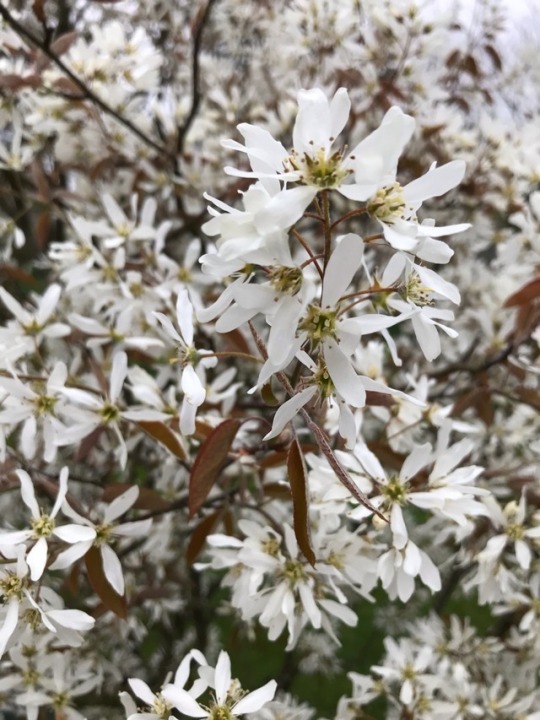


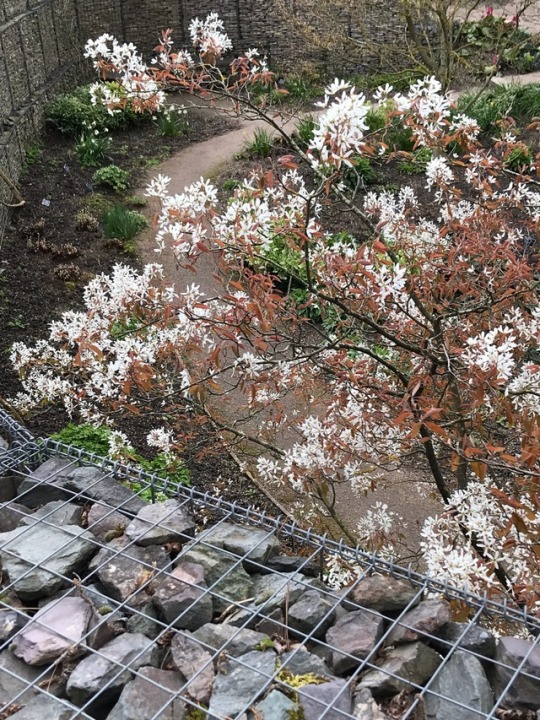
Plant of the Day
Sunday 7 April 2019
The popular Amelanchier lamarckii (snowy mespilus, juneberry, serviceberry) is in full flower along with the Magnolia and Prunus (cherry). This large deciduous shrub or small tree has bronze-tinged young leaves which are green for the summer and turn orange and red in autumn. The white flowers are followed in summer by fruit which turn from red to dark purple-black berries. These fruit are rapidly taken by the birds, in my garden the blackbird always arrives to eat mine.
Jill Raggett
#amelanchier#snowymespilus#juneberry#serviceberry#deciduousshrub#deciduoustree#whiteflowers#floweringtree#plants#gardens#mhort#writtledesign#horticulture#garden#blossom
130 notes
·
View notes
Text
Forest Gardening – The Agroforestry Research Trust
A Forest Garden is a designed agronomic system based on trees, shrubs and perennial plants. These are mixed in such a way as to mimic the structure of a natural forest – the most stable and sustainable type of ecosystem in this climate.
The primary aims for the system are:
You're reading: Forest Gardening – The Agroforestry Research Trust
To be biologically sustainable, able to cope with disturbances such as climate change
To be productive, yielding a number (often large) of different products
To require low maintenance.
The crops which are produced will often include fruits, nuts, edible leaves, spices, medicinal plant products, poles, fibres for tying, basketry materials, honey, fuelwood, fodder, mulches, game, sap products. Forest gardens (often called home gardens) have been used for millennia in tropical regions, where they still often form a major part of the food producing systems which people rely on, even if they work elsewhere for much of the time. They may also provide useful sources of extra income. They are usually small in area, often 0.1-1 hectares (+61404532026 acres).
In temperate regions, forest gardens are a more recent innovation, over the last 30 years. A major limiting factor for temperate forest gardens in the amount of sunlight available to the lower layers of the garden: in tropical regions, the strong light conditions allow even understorey layers to receive substantial light, whereas in temperate regions this is not usually the case. To compensate for this, understorey layers in temperate forest gardens must be chosen very carefully.
Read more: One Thing I Wish Someone Told Me Before I Started a Succulent Garden
There are plenty of plant crops which tolerate shady conditions, but many are not well known. Many of the more common shrub or perennial crops need bright conditions, and it may be necessary to design in more open clearings or glades for such species. Temperate forest gardens are also usually small in area, from tiny back garden areas up to a hectare (2.5 acres) in size.
The key features which contribute to the stability and self-sustaining nature of this system are:
The large number of species used, giving great diversity.
The careful inclusion of plants which increase fertility, such as nitrogen fixers (eg. Alders [Alnus spp], Broom [Cytisus scoparius], Elaeagnus spp, and shrub lupins [Lupinus arboreus]).
The use of dynamic accumulators – deep rooting plants which can tap mineral sources deep in the subsoil and raise them into the topsoil layer where they become available to other plants, eg. Coltsfoot [Petasites spp], Comfreys [Symphytum spp], Liquorice [Glycyrrhiza spp], Sorrel (and docks!) [Rumex spp].
The use of plants specially chosen for their ability to attract predators of common pests, eg umbellifers like tansy.
The use, where possible, of pest and disease resistant varieties, eg. apples.
The increasing role of tree cover and leaf litter which improve nutrient cycling and drought resistance.
There is an excellent free app called Ticl (smart phone and web based) which allows you to walk around a garden with a smart phone and it will describe the plants nearest to you – or you can locate specific plants using a direction-finder. Online you can see a zoom-able map of the garden with location points marked on. If you visit the garden with a smart phone you can use Ticl to help identify what is growing!
Click here to see the ART forest garden. You need to log in to see all the plant points.
Designing in Layers
A forest garden is organised in up to seven ‘layers’ . Within these, the positioning of species depends on many variables, including their requirements for shelter, light, moisture, good/bad companions, mineral requirements, pollination, pest-protection, etc. The layers consist of:
Canopy Trees
– the highest layer of trees. May include species such as Chestnuts [Castanea spp], Persimmons [Diospyros virginiana], honey locusts [Gleditsia triacanthos], Strawberry trees [Arbutus spp], Siberian pea trees [Caragana arborescens] Cornelian cherries [Cornus mas], Azeroles and other hawthorn family fruits [Crataegus spp], Quinces [Cydonia oblonga], Apples [Malus spp], Medlars [Mespilus germanica], Mulberries [Morus spp], Plums [Prunus domestica], Pears [Pyrus communis], highbush cranberries [Viburnum trilobum].
Small trees and large shrubs
– mostly planted between and below the canopy trees. May includes some of the canopy species on dwarfing rootstocks, and others such as various bamboos, Serviceberries [Amelanchier spp], Plum yews [Cephalotaxus spp], Chinkapins [Castanea pumila], Elaeagnus spp, and Japanese peppers [Zanthoxylum spp]. Others may be trees which will be coppiced to keep them shrubby, like medicinal Eucalyptus spp, and beech [Fagus sylvatica] and limes [Tilia spp] with edible leaves.
Shrubs
– mostly quite shade tolerant. May include common species like currants [Ribes spp] and berries [Rubus spp], plus others like chokeberries [Aronia spp], barberries [Berberis spp], Chinese dogwood [Cornus kousa chinensis], Oregon grapes [Mahonia spp], New Zealand flax [Phormium tenax] and Japanese bitter oranges [Poncirus trifoliata].
Read more: Sauteed Garden Fresh Green Beans
Herbaceous perennials
– several of which are herbs and will also contribute to the ground cover layer by self-seeding or spreading. These may include Bellflowers with edible leaves [Campanula spp], Comfreys [Symphytum spp], Balm [Melissa officinalis], Mints [Mentha spp], Sage [Salvia officinalis], and Tansy [Tanacetum vulgare].
Ground covers
– mostly creeping carpeting plants which will form a living mulch for the ‘forest floor’. Some may be herbaceous perennials (see above), others include wild gingers [Asarum spp], cornels [Cornus canadensis], Gaultheria spp, and carpeting brambles (eg. Rubus calycinoides & R.tricolor).
Climbers and vines
– These are generally late additions to the garden, since they obviously need sturdy trees to climb up. They may include hardy kiwis [Actinidia spp], and grapes [Vitis spp].
Rhizosphere
– Any design should take account of different rooting habits and requirements of different species, even if root crops are not grown much. Some perennials with useful roots include liquorice [Glycyrrhiza spp] and the barberries [Berberis spp] whose roots furnish a good dye and medicinal products. Various beneficial fungi can also be introduced into this layer.
A long-term biologically sustainable system for growing food & other products for a household, school, community group etc.
Once established, little work is needed to maintain.
Planting out and establishment usually requires large numbers of plants and substantial work.
Source: https://livingcorner.com.au
Category: Garden
source https://livingcorner.com.au/forest-gardening-the-agroforestry-research-trust/
1 note
·
View note
Text
Saturday 26th June 2021 - part 1
HOORAH. Celebration Saturday & Day 26 of #30DaysWild
Today my blog is going to have lots of photos (just for a change, hah!) and I’m making absolutely no apology for the fact that they’re mostly really not very good photographs. Sometimes, joy in the subject far outweighs the best quality shots and this is one of those times.
Let me rewind a bit and set the scene. You may have followed my blog and be familiar with my Amelanchier lamarckii tree - also commonly known as a Snowy Mespilus - but I’m going to recap any way. Here’s the Gardeners’ World link for more info
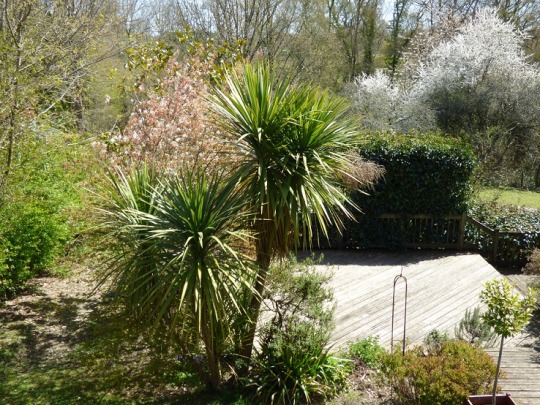
You can quickly scoot through this series of pictures taken back in Spring time. They just serve to show the location of the tree in our garden (as seen from our bedroom window) It’s in amongst other trees between what we call The Corridor on our left and the decking area. They also demonstrate the glorious showy blossom, which is all too short lived.

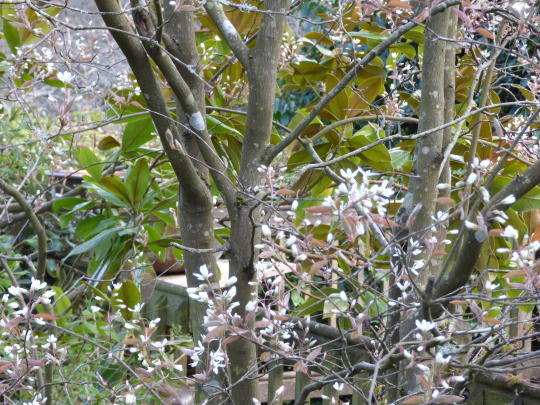

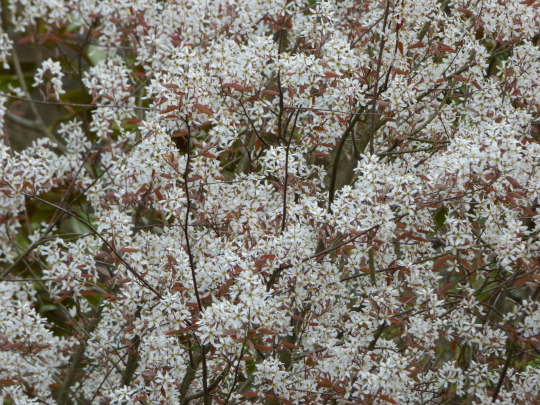
This area provides cover for birds coming from the long hedge the other side of The Corridor and a look out post with a view towards the shrubbery bed and the feeding station. It’s busy and popular.
I have to say I don’t often go out to bat for additions to gardens, everyone’s taste and circumstances are so different, but this is a tree I absolutely love and it gives such incredible value, just look
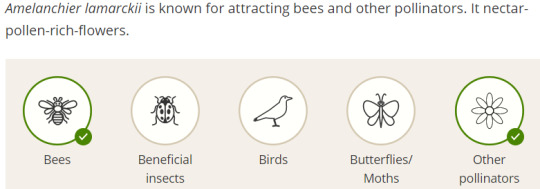

and it seems to get on with most soil types and aspects. What’s not to love.

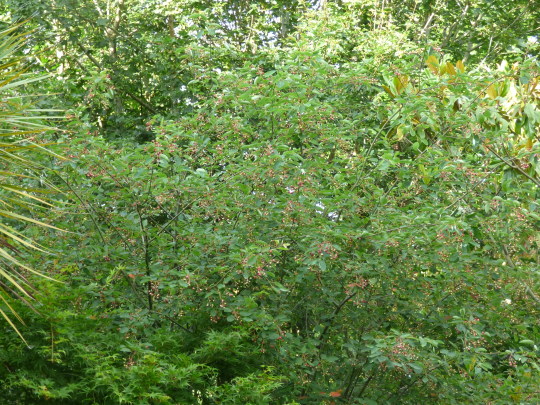
This brings us to yesterday. It was just before 7pm and so the light wasn’t great (we’re looking ESE or something like that and it had been a very dull day) Peer hard and you can see a bit of colour: the berries are starting to ripen.

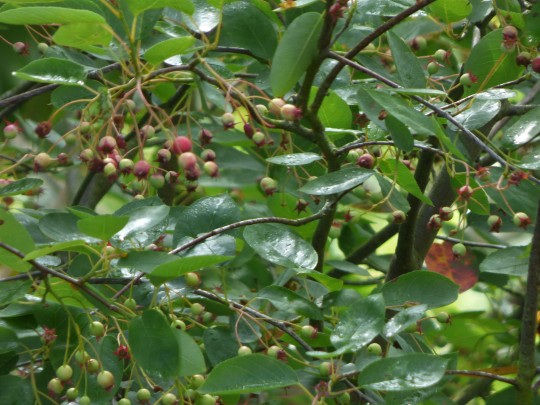
You can also see that some of the leaves are a rusty red colour and this made my spot so hard to capture.
First up as I was just about to come downstairs, I caught sight of the female. It wasn’t as clear a view as this and it was, at first, just an awareness of movement in the leaves. I wondered if it was going to be a male Blackcap. I confess that I’ve been on high alert for at least the last three years around this time in the season, always hoping to see Bullfinch return to raid this tree, but being unsuccessful. Now what I’ve learned as a good lesson to remember, is that just because I haven’t seen them, it really doesn’t mean that they haven’t been here, but you know, we always like proof and if it comes in photo form, so much the better.
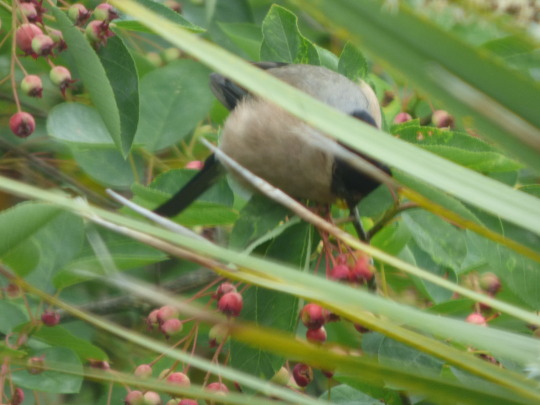
I know that like both the Gold and the Chaffinch, they’ve always been here in pairs and I could see more movement among the leaves and branches, but my oh my, it was hard work trying to get recognisable snaps that were even vaguely in focus.
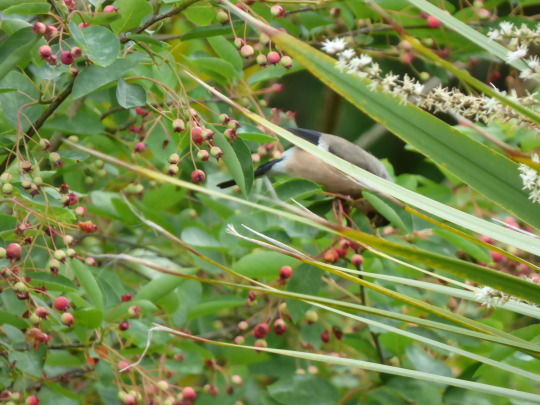
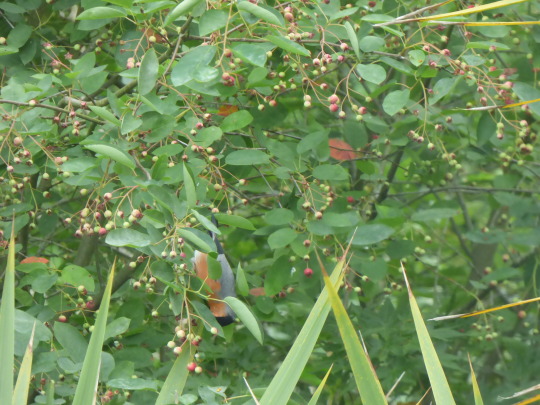

Scroll down to the next entry to see the best of what I have, but share my pleasure in just knowing that they’re here and we know they’re here too. Brilliant.
0 notes
Text
Green front gardens reduce physiological and psychological stress
Over a yr, the addition of crops brought about a 6% lower in stress ranges. Jeanie333/ Shutterstock
There’s rising proof that being in pure areas – whether or not whereas gardening or listening to chook tune – has a constructive impact on psychological well being. Being in nature can also be linked to improved cognitive perform, higher rest, dealing with trauma, and assuaging sure consideration deficit dysfunction signs in youngsters.
Nonetheless, most of those research have particularly appeared on the impact of public inexperienced areas, quite than non-public gardens. Throughout a time when many individuals are at dwelling because of COVID-19 restrictions, non-public backyard areas have been probably the most accessible inexperienced areas for individuals who have them. However do these small inexperienced areas have the identical advantages for our psychological well being?
Though carried out previous to the present pandemic, my not too long ago revealed research has proven that having crops in home entrance gardens (entrance yards) is related to decrease indicators of stress. On condition that entrance gardens are more and more being paved over by builders, we needed to selected to take a look at entrance gardens particularly to grasp what their worth and affect was each mentally, socially, and culturally. Entrance gardens are additionally a bridge between non-public and public life. As a result of they’re seen to neighbours and passersby, they can contribute to the wellbeing of the group, too.
Our experiment evaluated physiological and psychological stress ranges earlier than and after including crops to beforehand naked entrance gardens in Salford, Higher Manchester. We took measures of members’ cortisol concentrations (generally known as “the stress hormone”) of their saliva, in addition to self-reported perceived stress. Members ranged in age from 21 to 86 and 64% of them have been girls.
We added two planters with decorative crops – together with petunias, violas, rosemary, lavender, azaleas, clematis, and both an amelanchier (snowy mespilus) tree or a dwarf juniper tree. These have been chosen for his or her ease of upkeep and familiarity to most individuals within the UK. We additionally supplied the 42 residents with compost, self-watering containers, a watering can and a trellis. The analysis staff did all of the planting to make sure that all of the gardens have been related. Members got recommendation on find out how to keep and water their crops and have been permitted so as to add additional crops or options. The brand new additions have been as low upkeep as attainable.
Decrease stress
Over a interval of 1 yr, we discovered that having crops in beforehand naked entrance gardens resulted in a 6% drop in residents’ perceived stress ranges. This scale measures the diploma to which conditions in life are thought-about to be aggravating by bearing in mind emotions of management and the power to deal with stressors. The 6% lower is equal to the long-term affect of eight weekly mindfulness classes.
We additionally discovered statistically important modifications in members’ salivary cortisol patterns. Cortisol is the physique’s major stress response hormone, which might activate our “struggle or flight” response, and may regulate sleep and power ranges. We want cortisol on daily basis to be wholesome, and usually concentrations peak as we get up, and taper all the way down to their lowest degree at night time. Disturbances to this sample point out that our our bodies are below stress. We discovered that 24% of residents had a wholesome each day cortisol sample in the beginning of the research. This elevated to 53% three months after including the crops, suggesting higher psychological well being in these members.

Petunias have been simply one of many forms of crops added to members’ entrance gardens.
Sebastian Janicki/ Shutterstock
Causes for these modifications may be defined by what members informed us throughout interviews. Residents discovered that the gardens had a constructive affect on their outlook on life, with sturdy themes growing round extra constructive attitudes basically, a way of pleasure, and higher motivation to enhance the native atmosphere. The gardens have been additionally valued as a spot to loosen up.
These points are prone to contribute to folks’s private resilience to aggravating conditions – and over time, have had an impact on their physiological response to emphasize, as measured by the cortisol concentrations. A small addition of some crops within the entrance backyard was a constructive change to their dwelling atmosphere and the road.
All these wellbeing advantages of inexperienced areas are understood to be based mostly on two environmental psychology theories: consideration restoration principle and stress discount principle. Each psycho-evolutionary theories are based mostly on Wilson’s biophilia speculation that people have an innate affinity with the pure atmosphere.
Consideration restoration principle proposes that publicity to pure environments restores our potential to focus on duties that require effort and directed consideration. Spending time in pure environments calls for much less “mind energy” so to talk, as we don’t have to focus as a lot on particular stimuli or duties nor on suppressing distractions. Nature additionally supplies us alternatives for reflection. Stress discount principle proposes that pure environments provoke instantaneous emotional responses and fewer detrimental emotions than non-natural environments.
Our research’s outcomes present the significance of even small inexperienced areas for lowering stress, and could also be vital concerns in native planning, city improvement, and well being and social care. Built-in considering between the constructed atmosphere, environmental and well being sectors is important.
The findings from this mission additionally assist the social case for extra street-facing gardens and inexperienced areas. For instance, biophilic constructing requirements, environmentally centered city methods, and walkable road initiatives might be important methods of attaining this. Importantly for panorama architects and different professionals working with designed inexperienced areas, there may be scope for appreciable affect on human perceptions, well being and wellbeing.
For residents who’ve a entrance backyard house, planting designs may be low upkeep with out taking over an excessive amount of house. Container plantings could also be most interesting for renters. However for these with out entry to an out of doors house, there may be some proof that indoor houseplants additionally present psychological well being advantages.

Lauriane Suyin Chalmin-Pui works for the Royal Horticultural Society. She acquired funding from the Royal Horticultural Society, United Utilities, and ForHousing.
from Growth News https://growthnews.in/green-front-gardens-reduce-physiological-and-psychological-stress/
via https://growthnews.in
0 notes
Text
Thursday 18th March 2021
In the Garden
It’s a bit of a nothing day here, cool, quite dark and there’s rain on and off. Thank goodness I’d taken some photos outdoors earlier in the week.

Although the Daffodils next door are in bloom and there are plenty of yellow drifts in the wider area, and they have been flowering for some time now, apart from the one lonely bulb in the side hedge and one in the middle of the lower lawn, this is as far as ours have progressed so far. We’ve had green stalks since December, I thought they were going to stay like that forever. Slow off the mark, but I guess they’ll be going strong when the others are over.
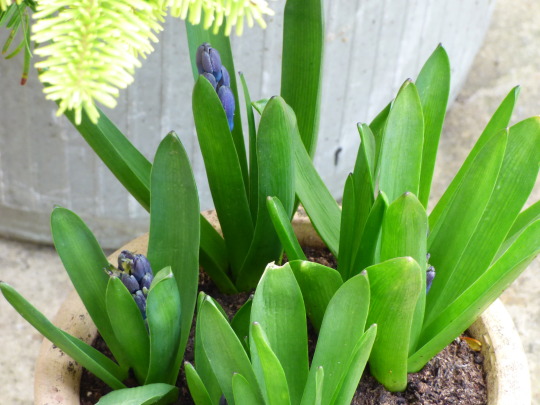
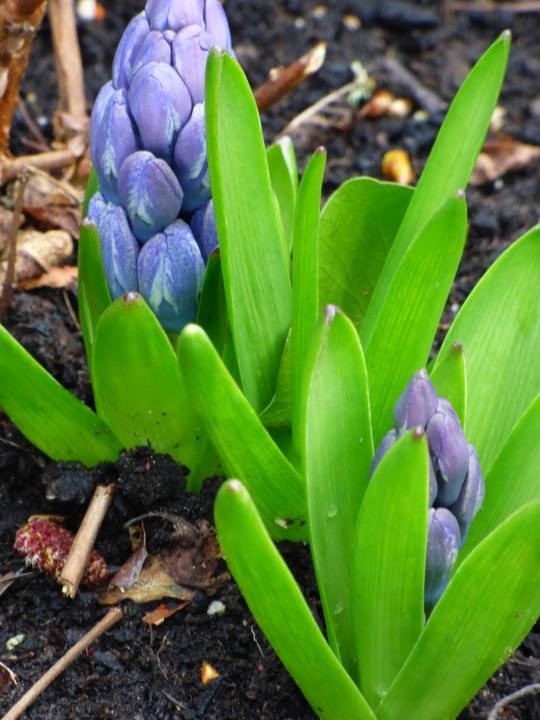

I’ve still not discovered my cream Hyacinth, so the ones we have are all blue. As I’ve said before, one was over a couple of weeks ago, one failed this year and the others are all at various stages. I might bring some indoors.

Dunnock deciding which seed to take first, while the House Sparrow (m) knows just what he wants to go for
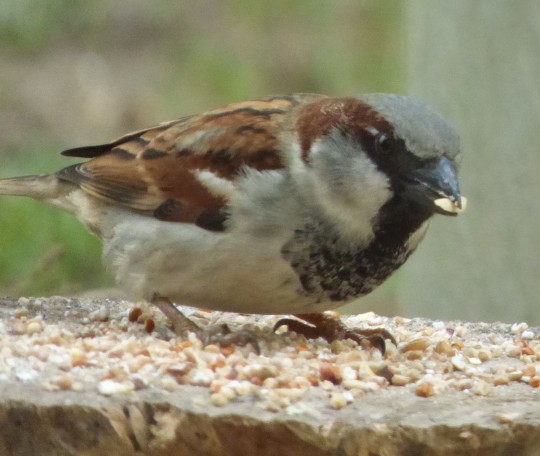

The Hazel Catkins are still going and there are buds on the trees now too.

Amelanchier Canadensis ‘Snowy Mespilus’
This is the specimen tree that I pin all my hopes on to attract Bullfinch. It didn’t work last year unfortunately but Blackbird and Thrush were all over it.

Lovely blossom, berries and autumn colour that provide year-round interest
This tree is a tall, hardy plant which fruits an edible red/purple berry, which is popular with the birds, bringing them flocking to your garden but can also be used to make jams and jellies. The white flowers in spring are reminiscent of ornamental cherry flowers, and the autumn colour of the leaves is fantastic, adding a new dimension to your garden's colour scheme.
Best grown either as a specimen tree or as a border piece, the Snowy Mespulis tolerates a wide range of soil and offers year-round interest.
Primrose co uk
It really is a pretty tree, although my chances of ever harvesting the berries to make jam are ooooh, let me estimate...I’ll go with zero, to less than zero!
Elsewhere and not where the wild Cyclamen are growing, we have more invaders through the weed membrane and stones.

Yellow ‘Lesser Celandine’ and, I think, White ‘Wood Violets’
Wildfood UK says about the Violet
The roots and seeds of this plant are toxic and should not be eaten. The flowers were traditionally used as a flavouring in puddings and sweets or crystallized and used as an edible decoration

The log ‘tables’ are really popular. Robin, above and Blackbird (f) below

I’ve been so pleased we moved the logs which are too big for the fire as they’ve proved to be a great edition to the feeding area.

Although sometimes ‘table manners’ leave something to be desired ‘May I get down now’ takes on a new meaning.

The long ‘legs’ propped up against the palm are also very popular with Blue Tits and Nuthatch as well and the one that fell over in the wind, is now a handy perch.

This male House Sparrow gave me quite a choice of poses.
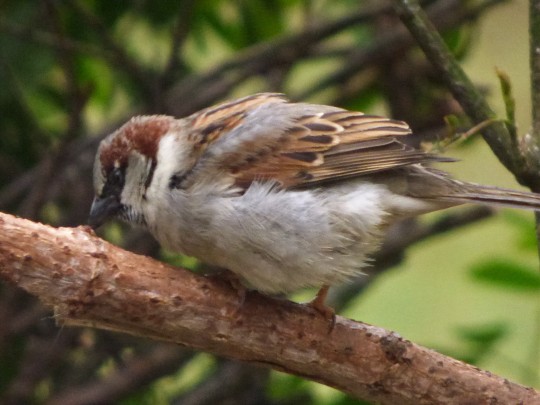

And here’s Nuthatch deciding on its next move, most probably to a seed tray where it’ll be sorting out the Sunflower seeds and throwing anything else all around.

GARDEN NOTE:
It’s been much quieter today, probably because of the rain, but Magpie has been here as a pair, not just the single. The Rooks have been in numbers, as have the Pheasants. The Stock Doves were getting a bit of bother from one particularly belligerent Wood Pigeon. There were absolutely loads of hungry House Sparrows and a quick visit from M Flambeau.
KITCHEN NOTES:
We had a lovely lunch today. Sourdough bloomer toasted with homemade smoked Mackerel rillettes.
Fork and shred the Mackerel flesh having removed the skin for the wildlife to enjoy. Mix to taste with a blend of mayonnaise, plain yoghurt and creamed horseradish; season with salt, pepper and some lemon juice and mix in just a few very finely chopped spring onions and cornichons. It was delicious.
I’ve also been making Granola and seem to have produced enough for a large guest house. The kitchen smells lovely though and it looks great in the Kilner jars.
WHAT DID I LEARN TODAY?
I was looking at Plantlife co uk which says about Lesser Celandine,
Did you know?
Its the floral equivalent of the swallow: both reappear around the same time and herald the coming of spring. In fact the word 'celandine' comes from the Greek chelidon meaning 'swallow' and it traditionally first blooms on 21st February making it one of the first woodland flowers of the year. This also gave the lesser celandine the name 'spring messenger'. Aptly enough, the Victorians used it to symbolise "joys to come".
One of its local names is "pilewort" since the herb was given for haemorrhoids. This was based on the doctrine of signatures since the knobbly tubers were thought to resemble piles.
Despite sharing the name, it isn't actually related to the greater celandine. Lesser celandine is a member of the buttercup family. Greater celandine is related to the poppy.
Wordsworth's favourite wild flower wasn't the daffodil - it was lesser celandine. He wrote no less than three poems about it: The Small Celandine, To the Same Flower and To the Small Celandine.
0 notes
Text
Tuesday 15th June 2021
On which there is a Visitor and Day 15 - halfway - of #30DaysWild
Not my visitor, but here’s a guest photo, which is something I haven’t had for a while.

Photo courtesy of my neighbour, S. With thanks
Hhmmm now who can this be and where has he come from?
The only peafowl I knew of (relatively) locally, were a couple about 7 miles away or thereabouts. A little cottage in a country lane where it had its garden mostly at the front. There were some there for years, but I think they relocated a long time ago. Otherwise, no, not aware of any in the immediate or the wider location.
I can’t imagine it’s been abandoned here and so far as I know, peafowl restrict their flying to kind of lift off and touch down if they want to access a roost in a tree. I have had a quick look online and see that they’re sort of related to pheasants and that reminded me of when a male pheasant in the woods was trapped in between the brambles and the fence at the end of the garden. It created itself a ‘run’ and was charging back and forth quite agitated, while we watched calling out ‘you can FLY’ but it really didn’t seem to occur to him. Fortunately he freed himself before becoming too distressed.
I’d heard our resident Song Thrush, Elvis, in absolutely full voice at about quarter to four this morning. He must have one of the finest sound systems going with our garden, the lie of the land, the woods and the valley. It feels as though his calls and tunes carry for miles...they certainly reach dreamland, where I was hoping to dwell a little longer. But we haven’t heard any noise from next door’s guest, which is strange as they have such a bad reputation for disturbing the peace - peafowl that is, not our lovely neighbours!
I had a quick look on YouTube for peacock sounds and the first clip I came up with, it sounded very much like a cat. That wasn’t what I was looking for. The second one was an hour long. A quick whizz to various points through that and every call sounded just the same as the one before. So I’m not posting that either. Just imagine a piercing screech.
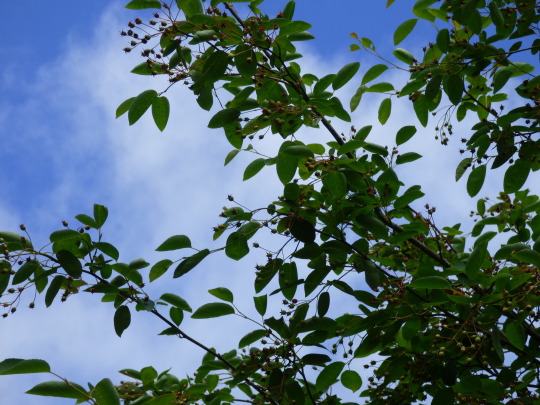

I’m still living in hope of an ‘exotic’ visitor to our garden - the much missed Bullfinch. No sign of any and the Greenfinch hasn’t been in an age either. Our Snowy Mespilus (Amelanchier) seems to be looking good on the berry front and they’re usually attracted to them, although last year I seem to remember Blackbirds taking the majority. Having looked them up they’re edible for humans if you get there in time, with a flavour akin to Blueberries (which personally I often find tasteless) or, can apparently be used like Sloes. So there you go - that’s something I learned today. I think they’re much better known the other side of the ocean though.
LINK
above links to a backyard forager blog.

Don’t forget you can see my other occasional blog pages on Tumblr on this LINK.
0 notes

